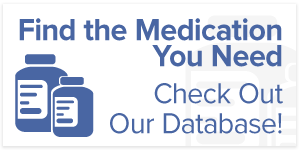If you’ve been diagnosed with type 2 diabetes or have just learned that you are pre-diabetic, chances are, your world has been turned upside-down. For many, a type 2 diabetes diagnosis is a stark wake-up call. Here’s the good news: this condition is completely treatable and in some cases, completely reversible. There are multiple ways to treat diabetes, such as blood sugar monitoring, regular exercise, healthy eating, and weight loss (which is a side effect of healthy choices). Let’s take a look at Type 2 Diabetes: What are your options?
Lifestyle Changes
The first recommendation for any type 2 diabetes is a complete lifestyle-overhaul. Since type 2 diabetes is primarily caused by lifestyle factors (inactivity and an unhealthy diet) – a change in the way you live your life is necessary. Weight loss can be achieved through healthy diet and exercise, so it is imperative to change your habits if you have discovered that you are pre-diabetic or suffer from type 2 diabetes.
Healthy eating should center around vegetables, fruits, whole grains, legumes, nuts, and lots of water. You’ll want to dramatically reduce your intake of sodas, sugary foods, processed foods, and refined carbohydrates. While there is no ‘official diabetes diet’, there are some common sense rules to follow.
- Eat natural foods. This means fruits and vegetables.
- No sodas.
- No processed foods.
- Lean meats like poultry, fish, and reduced-fat beef.
- Severely limit your sugar intake.
The next piece of the puzzle is exercise. A mix of aerobic and anaerobic exercise is ideal! Try and shoot for at least a half hour to a full hour of aerobic/anaerobic exercise 4-5 days a week. Aerobic exercise such as swimming, jogging, walking, and dancing, combined with anaerobic training (weightlifting and yoga) should be included into your weekly regimen.
Injectable Insulin
Generally, if a doctor can avoid prescribing insulin for a type 2 diabetes patient, they will. Doctors will usually recommend a healthy lifestyle (diet and exercise) and GLP-1 receptor agonists as opposed to insulin if the type 2 diabetes is still in its infancy. A prescription of synthetic insulin is necessary if a case of type 2 diabetes has reached a severe enough state and the body is unable to effectively produce its own insulin.
Generally, a type 2 diabetes patient will start off with a prescription of a long-acting insulin – like Lantus or Levemir – that only requires one shot at night. Long-acting insulins allow for a steady level of blood glucose all day. If diet and exercise are not enough and the type 2 diabetes continues to worsen, your doctor may prescribe you Lantus or Levemir to keep your blood sugar levels within a healthy range. If you need help paying for your long-acting insulin, click here to learn more about our prescription assistance programs.
GLP-1 Receptor Agonists
These medications – while injectable – are not a form of insulin. Victoza and Bydureon (two medications that we provide prescription assistance for) are GLP-1 receptor agonists that aid in the fight against type 2 diabetes.




